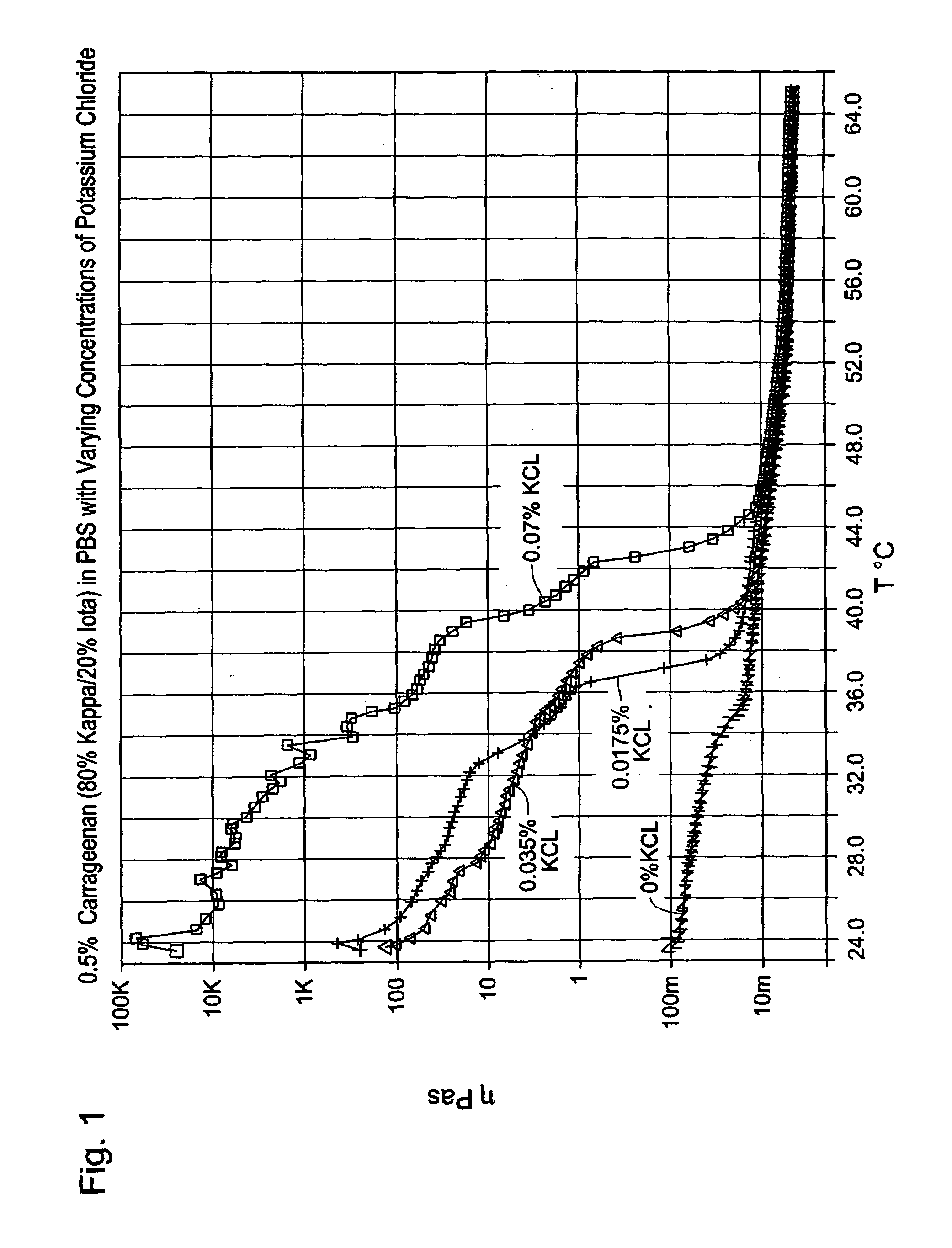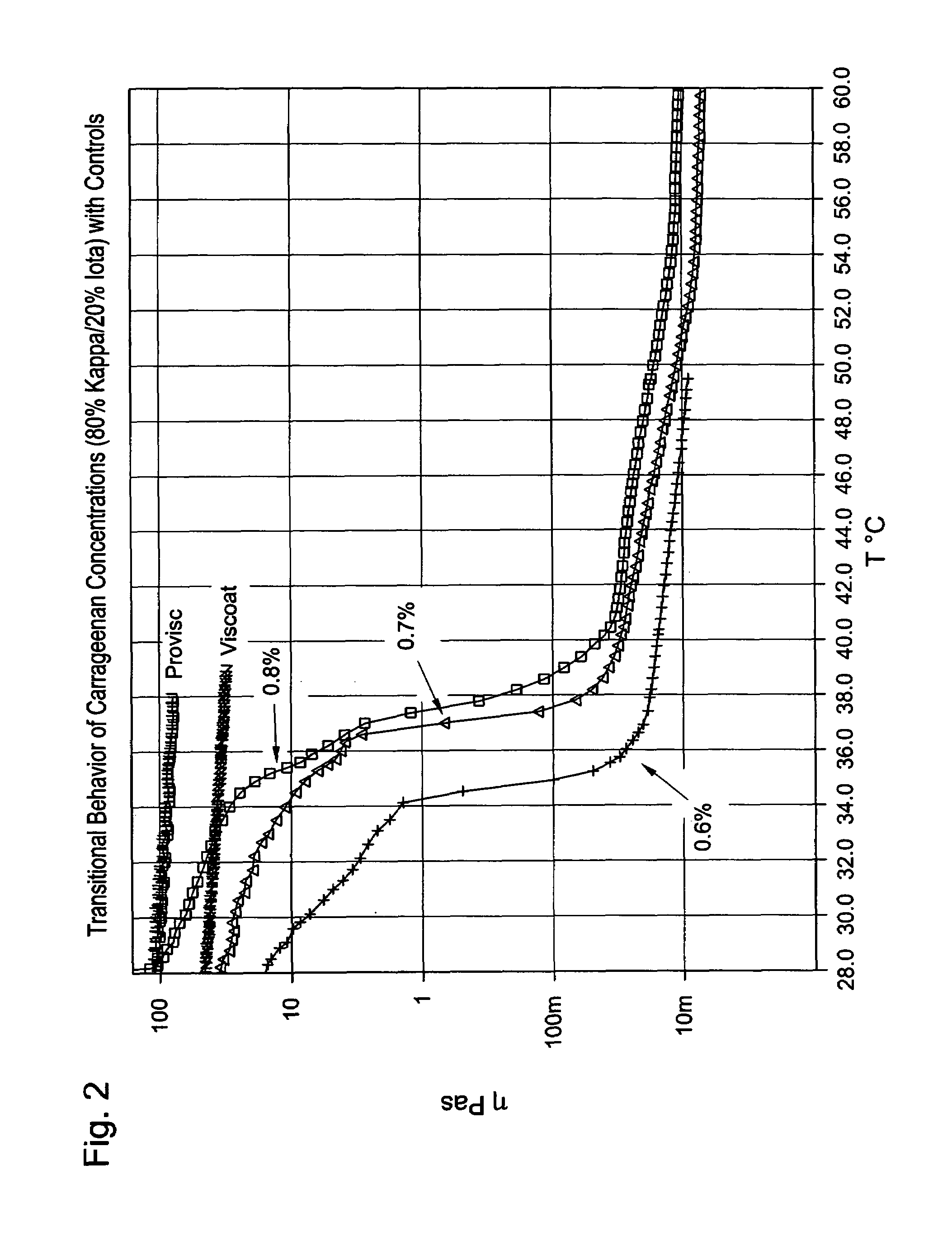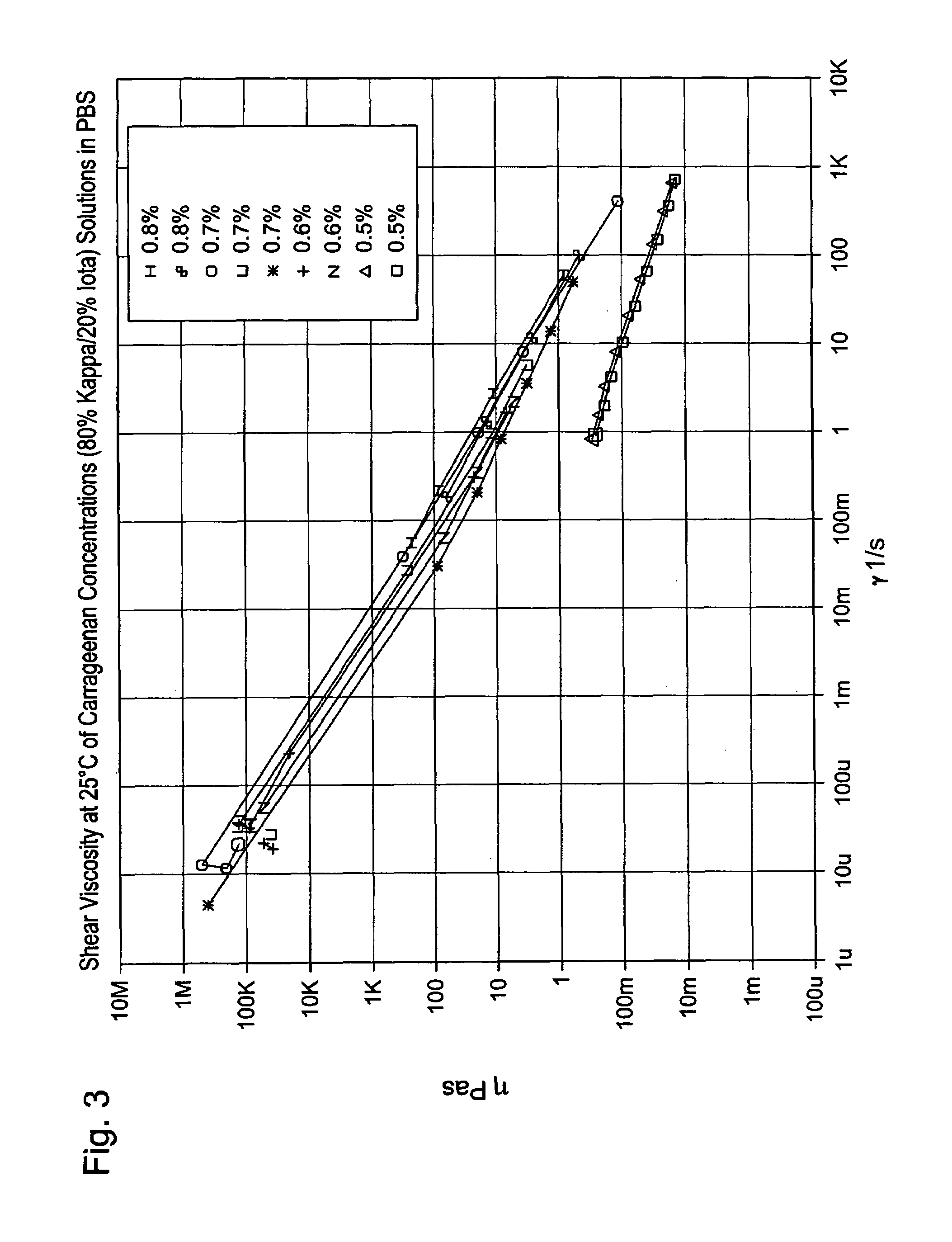Carrageenan viscoelastics for ocular surgery
a viscoelastic and carrageenan technology, applied in the field of viscoelastic materials for ocular surgery, can solve the problems of adhesion to ocular tissue, additional trauma to the eye, and significant and/or irreversible damage to susceptible ocular tissues, and achieve the effects of improving viscoelastic or viscoelastic agents, rapid loss of viscosity, and high viscosity
- Summary
- Abstract
- Description
- Claims
- Application Information
AI Technical Summary
Benefits of technology
Problems solved by technology
Method used
Image
Examples
example 1
[0036]Solutions of 0.5 wt % carrageenan (80% kappa- / 20% iota-) were made in PBS with 0% to 0.070% KCl. These samples were heated to above the transition temperature and hot filtered through a 5 micron filter. The solutions were cooled and then subjected to 50 passes through a dual hub syringe connector. Rheological data was then collected, and viscosity versus temperature data is shown in FIG. 1. The figure shows that the effect of increasing levels of potassium is to increase the pre-transition viscosity and to increase the transition temperature. Potassium ions appear to have little or no effect on the post-transition viscosity.
example 2
[0037]Solutions with a total of 80% kappa-carrageenan and 20% iota-carrageenan were made in phosphate buffered saline. The total solids of the solutions ranged from 0.6 wt % to 0.8 wt %. FIG. 2 shows the viscosity versus temperature Theological curves for these mixtures. The curves for PROVISC® product and for VISCOAT® product are also included as controls. The figure shows that increased solids content increases both the pre-transition viscosity and the transition temperature itself. The 0.7 wt % and the 0.8 wt % samples are viscosity matched to the VISCOAT® and PROVISC® curves at 28° C., respectively. PROVISC® and VISCOAT® lose about 33% of their viscosity over the range shown in the figure. In marked contrast, the 0.7 and 0.8% carrageenan gels lose more than 99.9% of their viscosity over the transition range from approximately 34° C. to approximately 40° C.
example 3
[0038]Solutions of carrageenan (80% kappa- / 20% iota) were made at 0.5%, 0.6%, 0.7% and 0.8% in PBS and hot filtered and homogenized as above. FIG. 3 shows the viscosity versus shear rate dependencies for these samples. The figure shows a general increase in viscosity with increased levels of carrageenan in the solution. Interestingly, the viscosity of the 0.5% solutions are much lower than the other samples. The 0.5% samples did not gel to the extent of the higher weight percent samples.
PUM
| Property | Measurement | Unit |
|---|---|---|
| Temperature | aaaaa | aaaaa |
| Temperature | aaaaa | aaaaa |
| Fraction | aaaaa | aaaaa |
Abstract
Description
Claims
Application Information
 Login to View More
Login to View More - R&D
- Intellectual Property
- Life Sciences
- Materials
- Tech Scout
- Unparalleled Data Quality
- Higher Quality Content
- 60% Fewer Hallucinations
Browse by: Latest US Patents, China's latest patents, Technical Efficacy Thesaurus, Application Domain, Technology Topic, Popular Technical Reports.
© 2025 PatSnap. All rights reserved.Legal|Privacy policy|Modern Slavery Act Transparency Statement|Sitemap|About US| Contact US: help@patsnap.com



